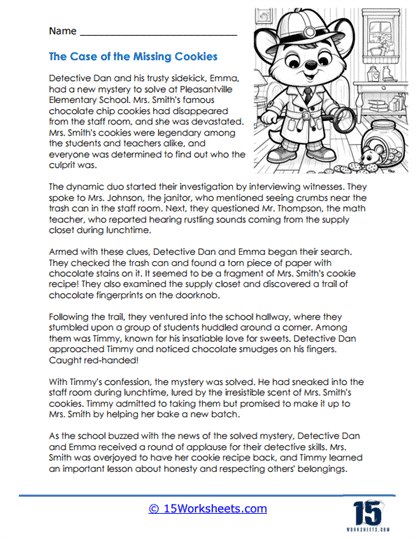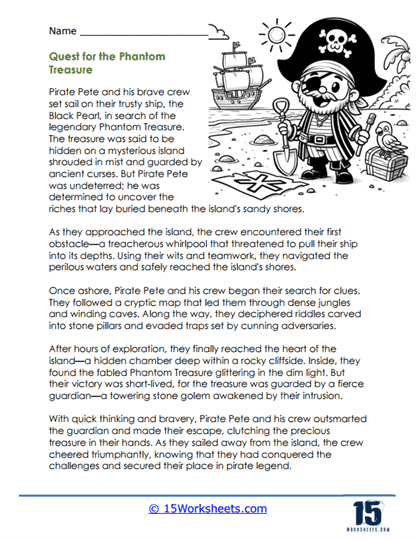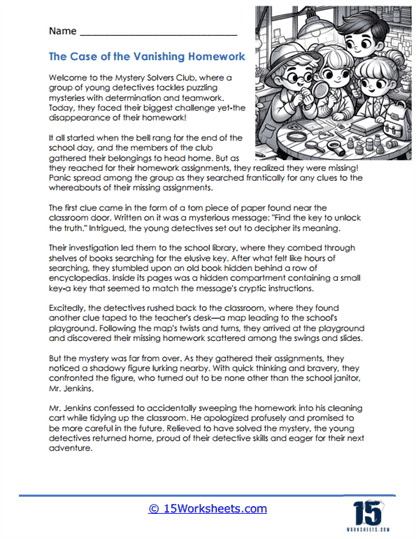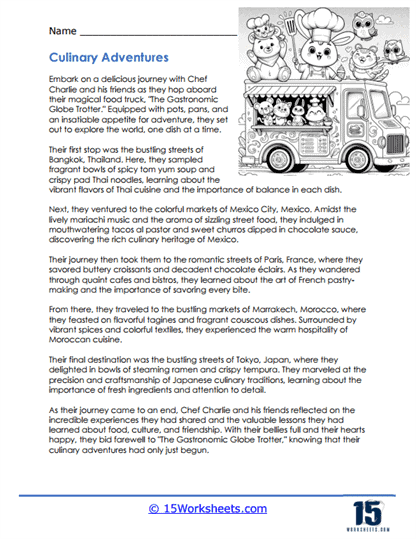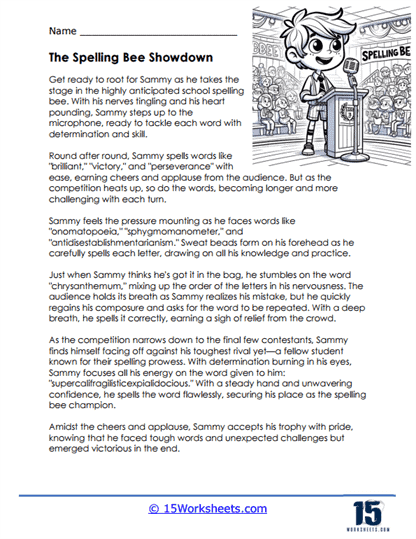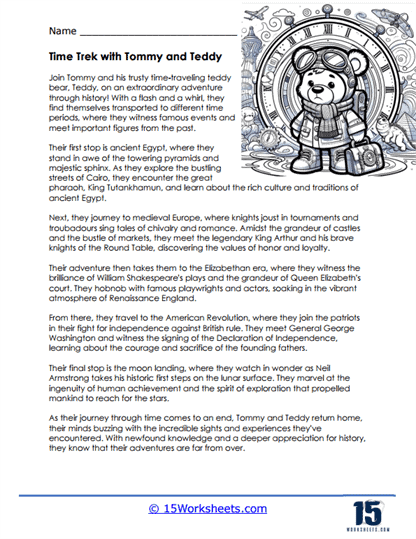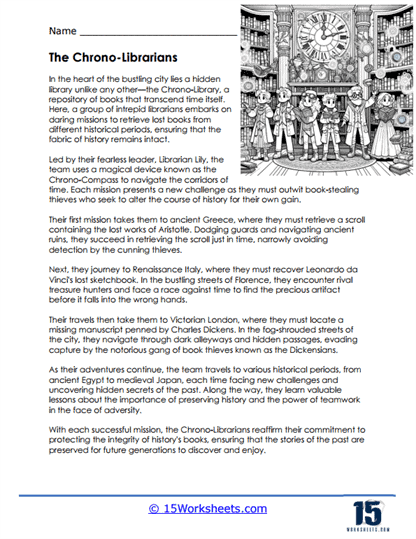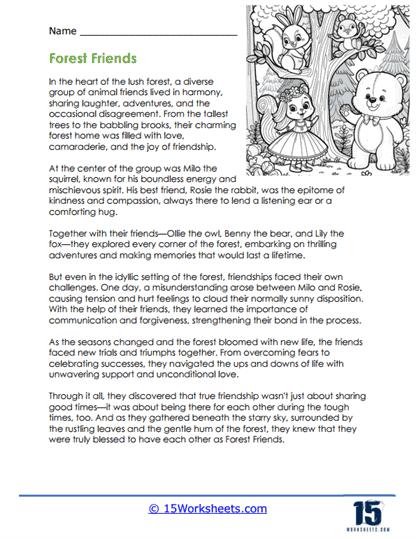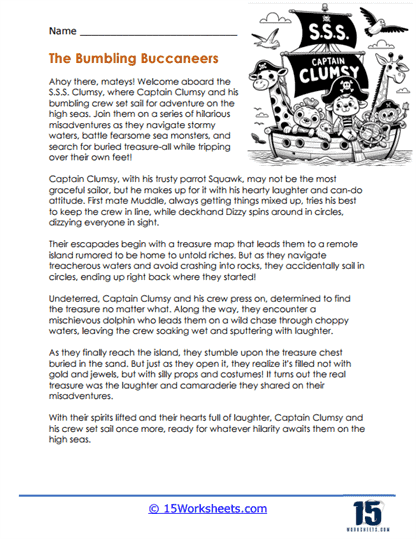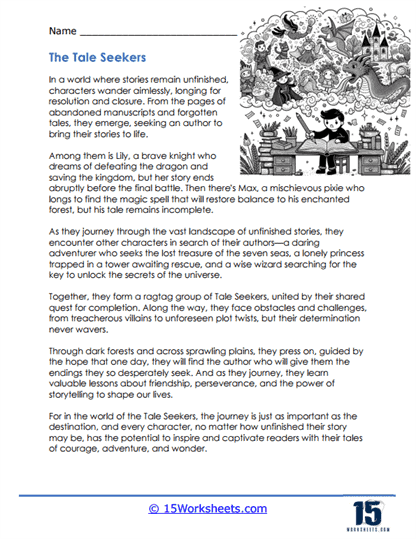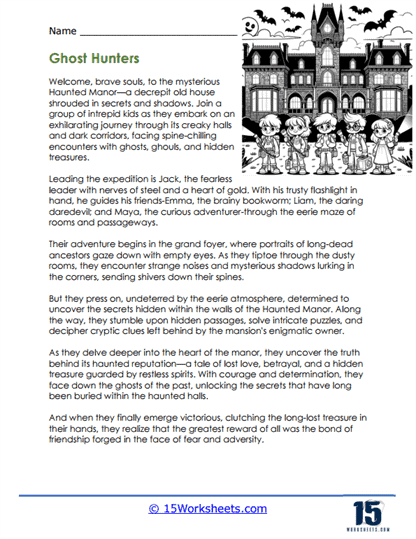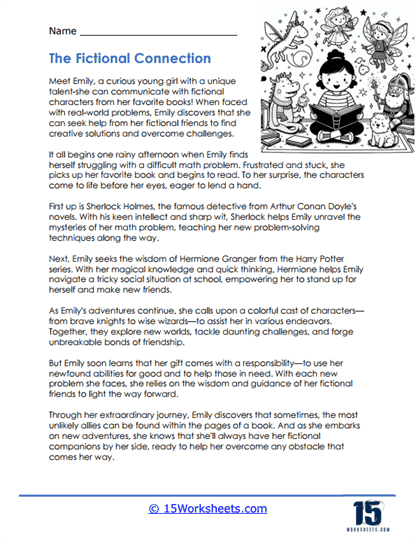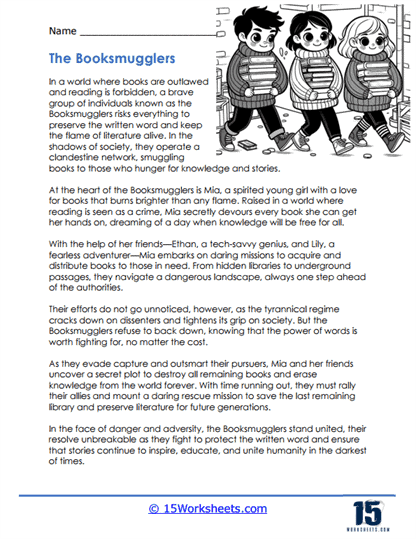Fiction Passages with Questions Worksheets
About These 15 Worksheets
These worksheets were created to enhance students’ reading comprehension and fluency through engaging with narrative texts. These worksheets typically feature a short story or an excerpt from a longer piece of fiction, followed by a series of questions about the text. The primary objective is to help students process and understand the content, structure, language, and themes of fictional works.
Fictional reading passages refer to written texts that are created for the purpose of storytelling, imagination, or entertainment. These passages can encompass various forms such as short stories, novels, excerpts from books, or even standalone scenes. They are crafted by authors to engage readers in imaginary worlds, characters, and events.
Students are tasked with reading these passages and understanding elements such as plot, character development, setting, themes, and literary devices employed by the author. Fictional reading passages serve as vehicles for exploring different perspectives, cultures, and experiences. They allow readers to immerse themselves in narratives that may be vastly different from their own realities, fostering empathy, creativity, and a deeper understanding of the human condition.
Types of Exercises
Multiple Choice – These are questions with a set of given options out of which the student must select the correct answer. They usually test the student’s ability to recall specific details, understand vocabulary in context, or interpret elements of the story such as themes, characters’ motivations, and plot development.
True or False – Students determine whether statements about the passage are correct or not. This exercise helps students practice identifying factual information and understanding the text’s accuracy.
Short-Answer – Requiring a brief written response, these questions encourage students to express their understanding of the text in their own words. This can include summarizing parts of the story, interpreting characters’ actions, or explaining narrative elements.
Matching Exercises – These involve linking terms, characters, or quotes with their correct descriptions or other matching elements found in the text. This reinforces the retention of key details and the ability to make connections within the text.
Fill-in-the-Blanks – With parts of sentences removed from the text, students must use context clues to fill in the missing information, often focusing on vocabulary and key details.
Sequencing Events – Students arrange a series of events from the story in the order they occurred, which reinforces understanding of the narrative structure and causal relationships within the plot.
Predictive Questions – These questions ask students to guess what might happen next in the story or how a character might react to certain events, promoting critical thinking and inference skills.
Discussion Prompts – Often more open-ended, these prompts ask students to discuss themes, character dynamics, or potential alternate endings. This encourages deeper analysis and the articulation of personal interpretations and opinions.
Creative Writing Prompts – Related to the text, these prompts ask students to write continuations of the story, diary entries from a character’s perspective, or new endings. This type of exercise nurtures creativity and helps in understanding characters and themes.
Vocabulary in Context – Students might be asked to define words based on how they are used in the passage or to use context clues to determine meaning. This can expand vocabulary and improve understanding of nuanced language.
The Benefits Of These Worksheets
Practicing with these worksheets can greatly aid in improving reading comprehension in several ways:
Enhanced Engagement – By providing a narrative context, these worksheets make reading a more engaging and enjoyable activity, which can motivate students to read more closely and with greater interest.
Vocabulary Building – Exposure to new words within the context of a story helps students learn and remember vocabulary, as well as see how words function within sentences.
Critical Thinking – Answering questions about fiction requires students to think critically about the text, understand subtleties, and make inferences, which are key components of advanced comprehension.
Textual Analysis Skills – Worksheets can help students develop skills to analyze a text’s structure, themes, and stylistic elements, fostering a deeper understanding and appreciation of literature.
Recall and Summarization – Retrieving information from memory and summarizing content encourages students to focus on key details and main ideas, consolidating their understanding.
Inference – Many questions will ask students to draw conclusions from the text, improving their ability to infer information that is not explicitly stated.
Contextual Understanding – As students encounter different characters, settings, and scenarios, they develop a nuanced understanding of diverse contexts and human experiences.
Reading Fluency – With repeated practice, students become more adept at processing information quickly, leading to smoother, faster reading.
In addition to reading comprehension, fluency is another crucial area that benefits from regular practice with these worksheets. Fluency refers to the ability to read text not only accurately but also quickly and with proper expression. The repeated and varied reading practice provided by fiction passages allows students to become more comfortable with reading aloud and processing text efficiently. This, in turn, can enhance their overall reading speed and ability to understand and enjoy the material.

